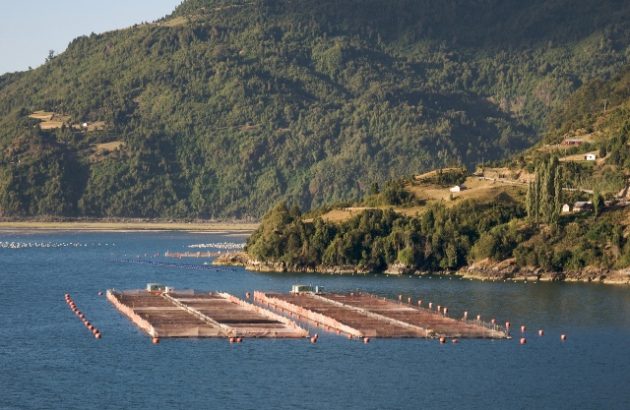
Canada mismanaging fish farms, says federal environment commissioner
by Mia Rabson, The Canadian Press

Environment commissioner Julie Gelfand says Canada's management of the $1 billion salmon farming industry is lacking, especially when it comes to assessing the risk that diseases among farmed fish pose to wild salmon

PHOTO: Sam Beebe/Ecotrust
Environment commissioner Julie Gelfand is releasing three new audits today, including a look at Canada’s management of the $1 billion salmon farming industry, which she says is lacking when it comes to assessing the risk that diseases among farmed fish pose to wild salmon.
There are research gaps about these risks and the government is also not properly monitoring the impact of the drugs used to treat those diseases.
Gelfand also says there is also no national standard on the kind of nets used to contain farmed salmon in the ocean, which is a particular problem in the Atlantic where heavy storms batter salmon farms and destroy nets.
In 2015, 40,000 salmon escaped from farms in Newfoundland and Labrador, New Brunswick and Nova Scotia.
Gelfand’s spring reports also look at Canada’s commitment to the United Nations 2030 Agenda for Sustainable Development and the United Nations Convention on Biological Diversity, both of which, she warns, could become the latest international environment agreements Canada signs but does little to actually implement.
Gelfand found a lack of leadership in the government to address the targets laid out in those agreements and says there is nothing that properly assesses how government policies can or do contribute to meeting them.
The agenda for sustainable development is an international agreement for countries to work towards sustainable environmental, economic and social development, including gender equality, eliminating poverty, climate action and industrial innovation.
Canada committed to the 2030 agenda in 2015 and recommitted to it last year, but the audit says the government hasn’t yet put in place the fundamental requirements required.
“The federal government committed to implementing the 2030 agenda three years ago, but again, it is not ready to respect its international commitment,” she said. “When will it be ready?”
Her main concerns about the UN agenda commitment stem from the fact while the main departments involved have done many consultations on the issues, there has not yet been a proper analysis of what government policies will affect the targets laid out in the agreement. There is also no implementation plan to measure, monitor and report on Canada’s progress to meeting those targets.
However, the audit report looked at the period between September 2015 and November 2017 and Gelfand does acknowledge that the February federal budget promised nearly $50 million between now and 2030 to create a specific government unit to oversee the agenda, as well as to fund monitoring and reporting by Statistics Canada.
The statistics agency also expects this spring to have a data portal ready to report on the Canadian indicators around the UN 2030 agenda.
The single unit could address one of Gelfand’s concerns that there are too many departments assigned as co-leads on the agenda, leaving no one to take full ownership of or leadership on the file.
“In my opinion, it is difficult to move forward with 10 hands on the wheel,” she says.
Gelfand’s third audit this spring looked at another Canadian UN environment commitment it has failed to meet, this one the United Nations Convention on Biological Diversity, a legally binding treaty acknowledging a global decline in biodiversity is one of the “most serious issues facing humanity.”
Canada has had a biodiversity strategy under this convention since 1995 and in 2002 countries that signed on to the convention committed to reducing the rate of biodiversity loss by 2010. They didn’t do it and new targets were set for 2020.
Gelfand’s audit found Environment Canada isn’t doing what it needs to do to hit the 2020 targets, focusing its efforts on international meetings and creating national committees rather than analyzing whether its actions will do anything to help. There is also no comprehensive monitoring or reporting on whether there is any progress to meeting the 2020 targets.
In Canada, more than 500 plants and animals are listed as species at risk under federal legislation, a list that grows each year. Various reports have found mammal populations in Canada declined 43 per cent between 1970 and 2014, amphibian and reptile populations fell 34 per cent and fish populations were down 20 per cent. The World Wildlife Fund in 2017 also reported that species declined far faster between 2002 and 2014 than they did between 1970 and 2002, even though there are supposed to be many more protections in place to prevent that from happening.